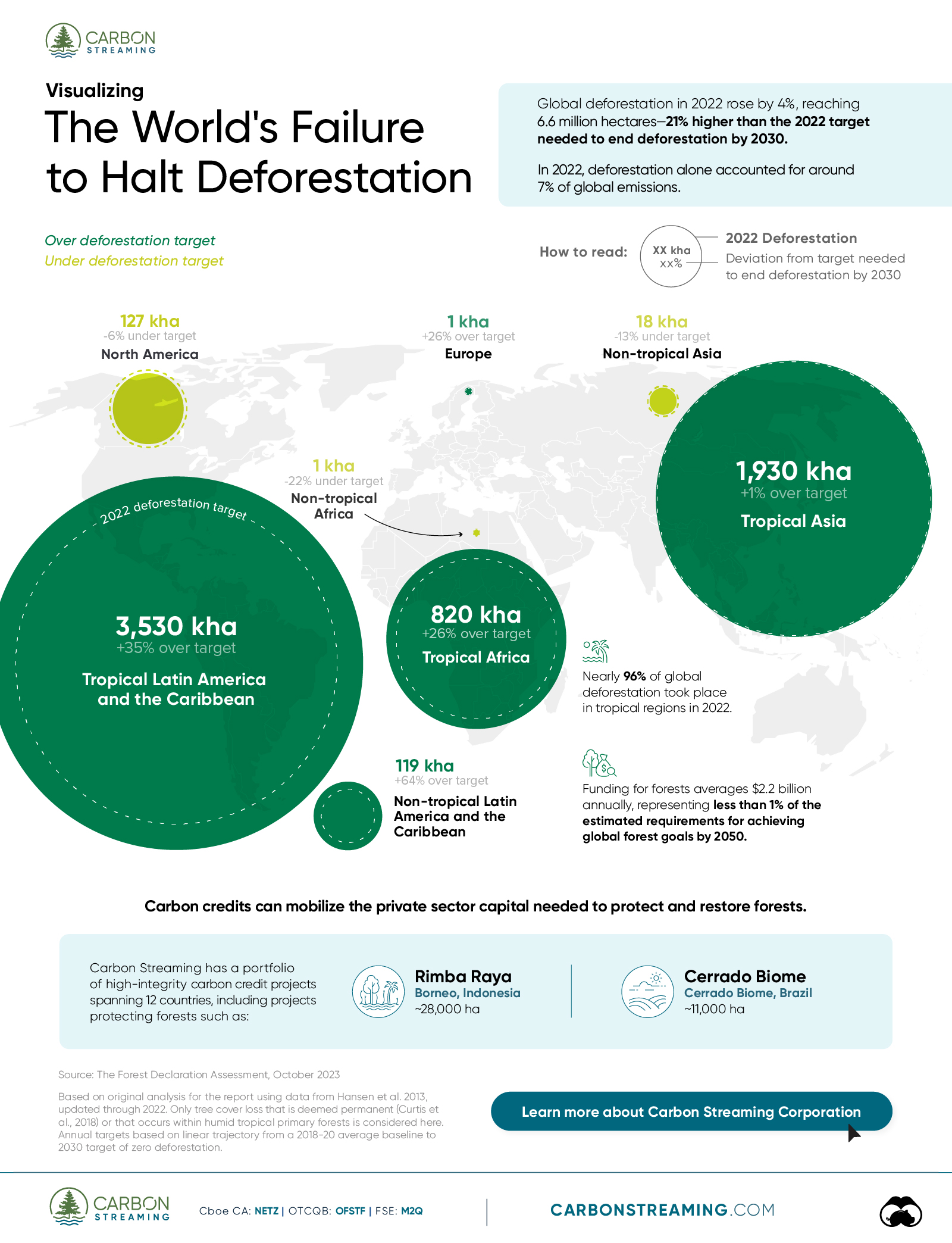
Visualizing The World’s Failure to Halt Deforestation
Global deforestation in 2022 rose by 4%, reaching 6.6 million hectares. This number is 21% higher than the 2022 target needed to end deforestation by 2030.
In this map, our sponsor Carbon Streaming examines the failure to reduce deforestation in certain regions around the globe, based on data from the Forest Declaration Assessment.
Most Deforestation Occurs in Tropical Regions
In 2022, deforestation alone accounted for around 7% of global greenhouse gas emissions.
Nearly 96% of global deforestation took place in tropical regions in 2022. The loss of tropical primary forests reached 4.1 million hectares, 33% higher than the needed trajectory to halt primary forest loss by the end of the decade:
Non-tropical forests in Africa and Asia, as well as forests in North America, suffered deforestation below the target for 2022.
Meanwhile, public and private finance for forests remains far below estimated needs for meeting global goals to halt and reverse deforestation.
More Funding for Forest
Funding for forests averages $2.2 billion annually, representing less than 1% of the estimated requirements for achieving global forest goals by 2050.
Carbon credits can help mobilize the private sector capital needed to protect and restore forests by providing funds where it is urgently needed. Companies can purchase carbon credits to support critical mitigation efforts outside of their value chains, including nature-based solutions that may not receive funding otherwise.
Carbon Streaming has a portfolio of high-integrity carbon credit projects spanning 12 countries, including projects protecting forests such as the Cerrado Biome project and Rimba Raya project.






